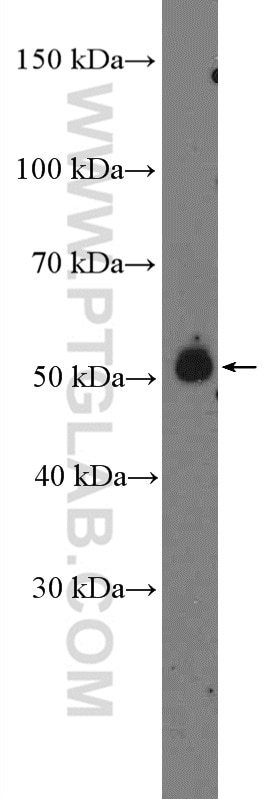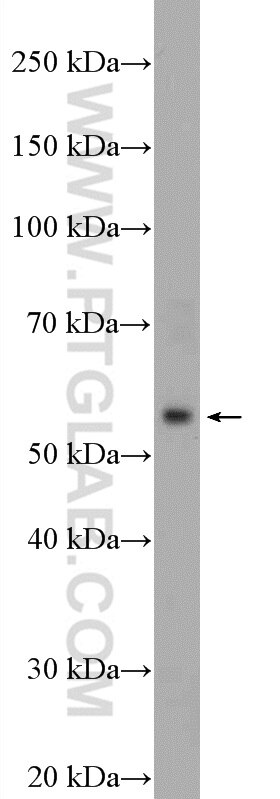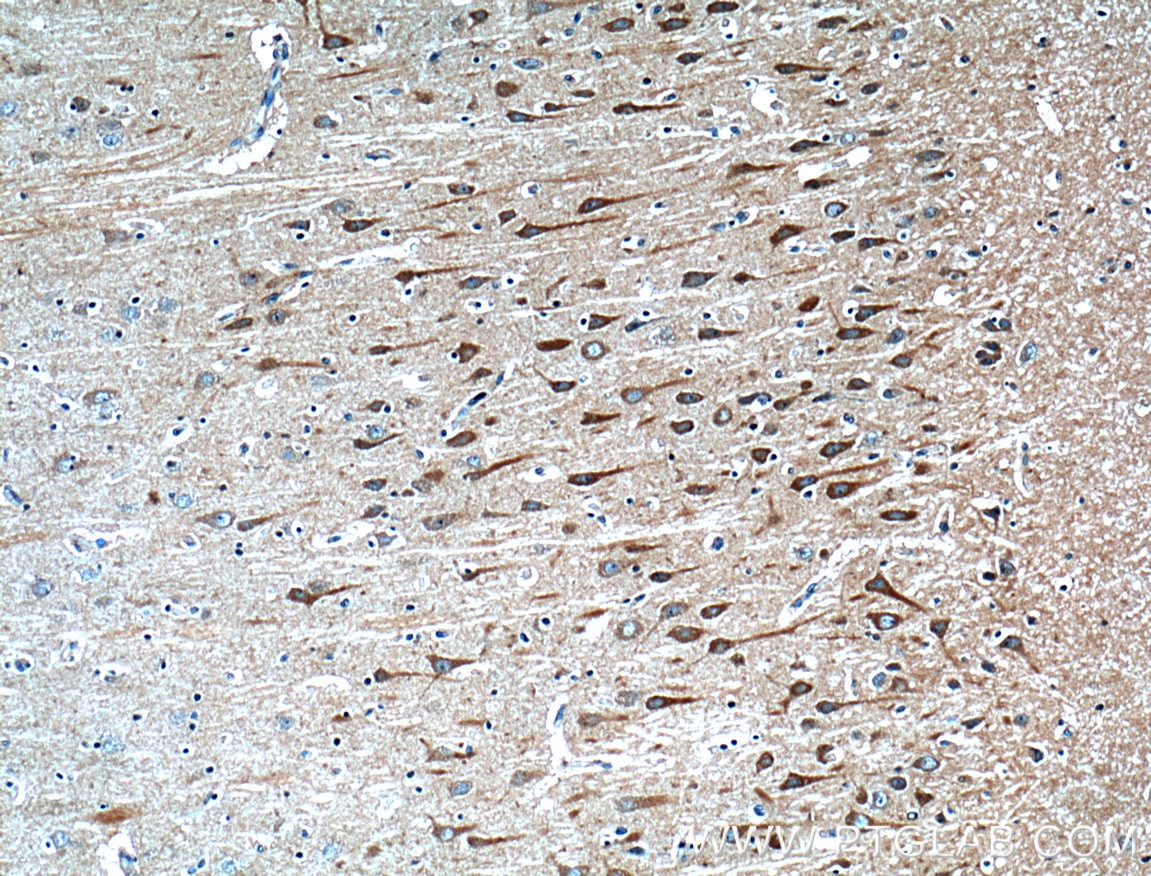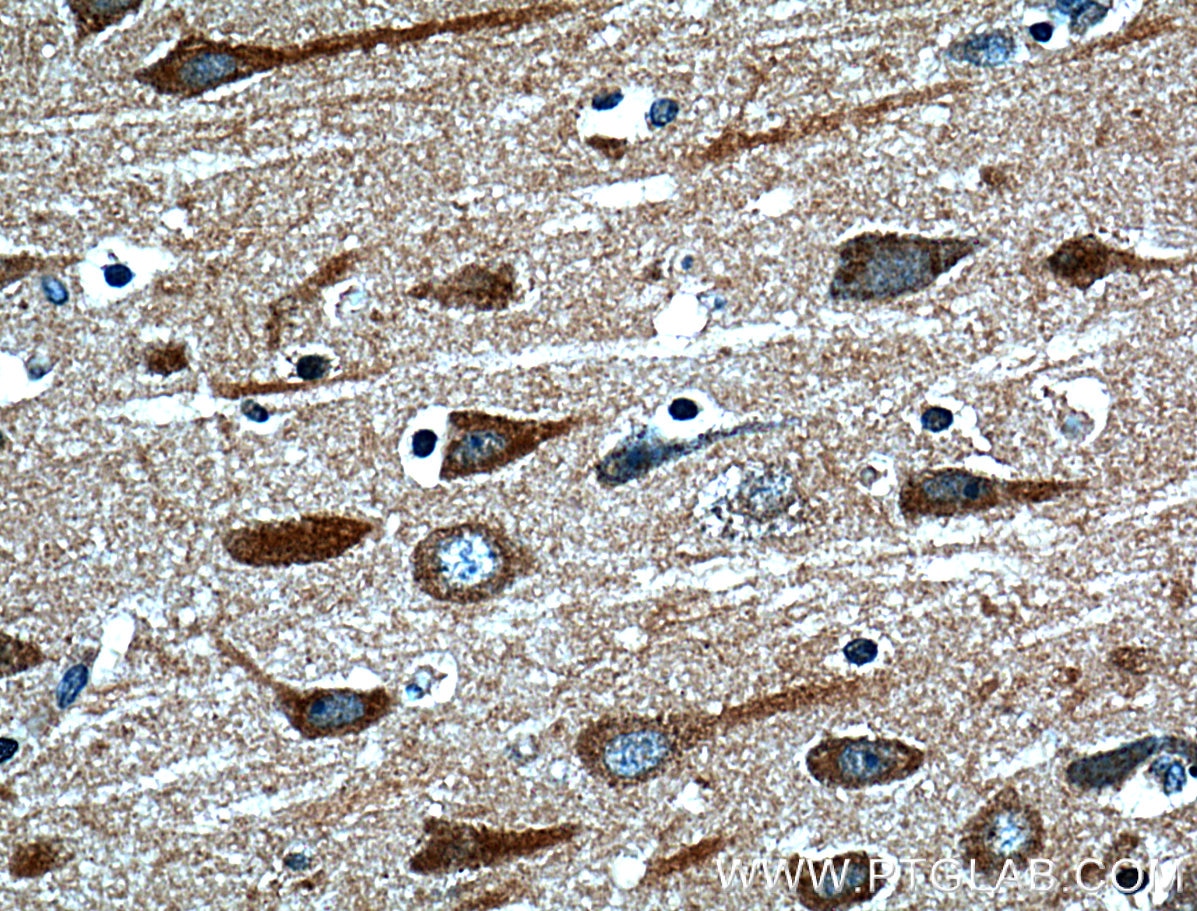Anticorps Polyclonal de lapin anti-HTR7
HTR7 Polyclonal Antibody for WB, IHC, Indirect ELISA
Hôte / Isotype
Lapin / IgG
Réactivité testée
Humain, rat, souris
Applications
WB, IHC, Indirect ELISA
Conjugaison
Non conjugué
N° de cat : 13830-1-PBS
Synonymes
Galerie de données de validation
Informations sur le produit
13830-1-PBS cible HTR7 dans les applications de WB, IHC, Indirect ELISA et montre une réactivité avec des échantillons Humain, rat, souris
| Réactivité | Humain, rat, souris |
| Hôte / Isotype | Lapin / IgG |
| Clonalité | Polyclonal |
| Type | Anticorps |
| Immunogène | HTR7 Protéine recombinante Ag4742 |
| Nom complet | 5-hydroxytryptamine (serotonin) receptor 7 (adenylate cyclase-coupled) |
| Masse moléculaire calculée | 445 aa, 49 kDa |
| Poids moléculaire observé | 50-55 kDa |
| Numéro d’acquisition GenBank | BC047526 |
| Symbole du gène | HTR7 |
| Identification du gène (NCBI) | 3363 |
| Conjugaison | Non conjugué |
| Forme | Liquide |
| Méthode de purification | Purification par affinité contre l'antigène |
| Tampon de stockage | PBS only |
| Conditions de stockage | Store at -80°C. 20ul contiennent 0,1% de BSA. |
Informations générales
Serotonin (5-hydroxytryptamine; 5-HT) acts as a neurotransmitter and neuromodulator in the central nervous system(CNS) (PMID:23100172). The behavioral effects of 5-HT are mediated by a large family of specific 5-HT receptors. HTR7 (5-hydroxytryptamine receptor 7) is a G protein-coupled receptor (GPCR), and many transcription factors can bind to its promoter, such as AP2, EGR-1, and MAZ (PMID:34164474). It is located in different brain regions, such as the hypothalamus, thalamus, cerebral cortex, and hippocampus (PMID:29637287). HTR7 is associated with circadian rhythm, anxiety, depression, schizophrenia, nociception, and memory (PMID:9154233).









